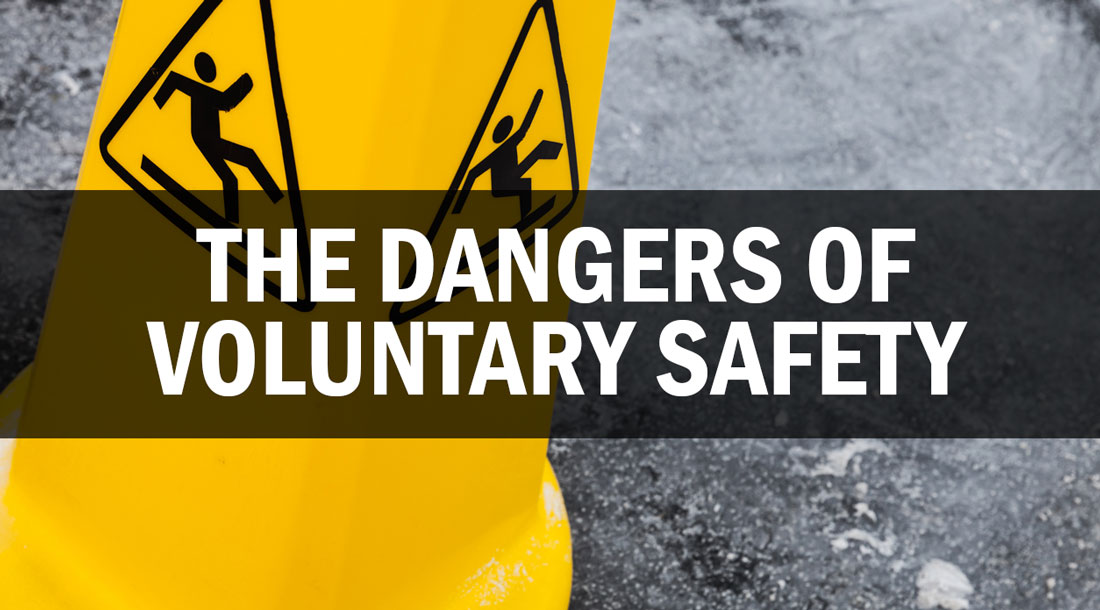When it comes to ice cleats, opinions tend to fall into two categories. Some see them as a “last resort,” only breaking them out when sidewalks are icy and unavoidable. Others view them as a non-negotiable part of workplace safety gear, just as essential as steel-toe boots or safety glasses.
Continue Reading
Winter slips and falls on snow and ice can be a major concern for companies of all sizes. While large companies tend to prioritize safety and continually learn and evolve their policies, smaller companies may implement a safety program and then shift their focus elsewhere. However, this can be a costly mistake. I once had a conversation with a senior executive who experienced several high-cost incidents at his company due to slips and falls on snow and ice during a winter storm. Upon investigating the accidents, it became clear that the employees who slipped and fell were not wearing ice cleat[…]
Continue Reading
When it comes to ice cleats, most are NOT safe to wear indoors. Traditional ice cleats are engineered for one thing – preventing slip and fall incidents on ice. Since Ice and snow don’t exist indoors, manufacturers don’t concentrate on indoor flooring materials when developing ice cleats to prevent slips and falls. This can severely complicate a company’s goal of reducing slip and fall incidents because, if traditional ice cleats are worn indoors, your employees are now at a high risk of causing a slip hazard. In other words, remember the OUTDOOR slipping incident you may avoid because ice cle[…]
Continue Reading
Now, when the word "winter" is mentioned, safety professionals immediately feel a shift in the atmosphere. They know that their job has become even more challenging - finding the most effective and safest ways to protect their employees who work in icy and snowy conditions. So let me ask you a few questions: Are you tired of endlessly searching online, attempting to determine which ice cleat or traction aid is the best option? Are you frustrated with purchasing a recommended traction aid, only to discover that your employees despise wearing them?
Continue Reading
The issue of workers having to constantly put on and take off their ice cleats throughout the day is not only a hassle, but it can also be a safety concern. In industries where employees need to frequently go outside, such as construction or delivery, the constant removal and reapplication of ice cleats can lead to complacency and an increased risk of slips and falls. Additionally, while ice cleats are designed to improve traction on snow and ice, most workers do not exclusively work on these surfaces. This means that ice cleats may not be effective on other slippery surfaces such as wet floor[…]
Continue Reading
It’s a question we’ve heard more than a few times. How do we answer it? Look at it this way: If you typed the phrase “ice cleats” into Google back in 2010, the search engine would give back around 418,000 results. Trust us on this number: it’s our job to run that specific search. Try the same search today, and you’ll get back more than 10 million results. What does this number tell us?
Continue Reading












